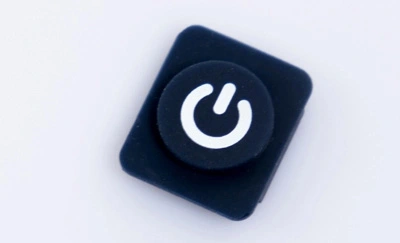
In electronic equipment, the switch as a key component for controlling the flow of electricity, its performance directly affects the overall performance of the equipment. As a special type of switch, the single membrane switch is widely used in various electronic devices due to its unique structure and excellent performance. In this article, we will explore the internal working principle of single membrane switch to help readers better understand its operation mechanism.
The single membrane switch is mainly composed of a conductive layer, insulating layer, contact layer, and support layer. The conductive layer is usually made of metal or conductive materials, used to pass the current; the insulating layer plays a role in isolating the conductive layer and contact layer, to ensure that the switch is not closed when the current will not pass; the contact layer is the part of the switch that is closed with the conductive layer in contact with the formation of the current path; the support layer is to provide structural support for the switch to ensure its stability and durability.
The single membrane switch closure and disconnection is achieved by applying an external force to change the relative position between the conductive layer and the contact layer. When the external force is applied to the switch, the insulation layer between the conductive layer and the contact layer is compressed, making the distance between the two decrease. When the distance is reduced to a certain extent, the contact resistance between the conductive layer and the contact layer is reduced, the current can pass through, and the switch is closed. When the external force disappears, the insulating layer restores its original state, the conductive layer and contact layer separation, switch disconnects.
The sensitivity and stability of the single membrane switch is an important indicator of its performance. Sensitivity depends mainly on the conductive layer and contact layer between the contact area and contact pressure. The larger the contact area and the more uniform the contact pressure, the higher the sensitivity of the switch. Stability, on the other hand, is affected by various aspects such as material selection, process manufacturing, and environmental factors. High-quality materials and excellent manufacturing processes can ensure that the switch maintains stable performance during long-term use.
In order to improve the sensitivity and stability of single membrane switches, china membrane switch manufacturers usually use advanced processes and materials. For example, highly conductive metal materials are used as the conductive layer to improve the efficiency of current transmission; materials with excellent insulating properties and mechanical strength are selected as the insulating layer to ensure that the switch remains stable when subjected to external forces; at the same time, precise mould design and manufacturing processes ensure that the shape and position of the contact layer matches the conductive layer to achieve the best possible contact effect.
In addition, environmental factors can also have an impact on the performance of single membrane switches. For example, changes in temperature may cause the material to expand or contract, which in turn affects the switch's closing and disconnecting effects. Therefore, in the design of single membrane switch, it is necessary to give full consideration to the characteristics of the use environment, choose materials with better environmental adaptability, in order to ensure that the switch can work stably under various conditions.
Because of its unique advantages, single membrane switches are widely used in a variety of electronic devices, such as touchscreen displays, keyboards, remote controls, and so on. With the progress of science and technology and people's requirements for the performance of electronic products, the single membrane switch is also in constant development and innovation. In the future, we can look forward to the emergence of thinner, more sensitive, and stable single membrane switches, bringing a better user experience to electronic equipment.
In short, as a special type of membrane switch products, the internal working principle of a single membrane switch involves conductive, insulating, contact, and other aspects. Through in-depth understanding of its working principle and performance characteristics, we can better apply and optimize this technology, contributing to the development of electronic equipment.